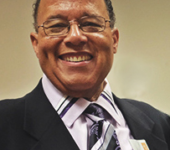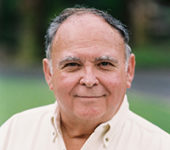• by Abelardo Villarreal, Ph.D., and Bradley Scott, Ph.D. • IDRA Newsletter • March 2008 • 

If you are not satisfied with the success that your campus is having with traditionally underserved students – primarily English language learners, low-income students and minority students – or if you have been cited for the poor academic performance of any or all of these groups of underserved students, you may be wondering if this is the year when you will be on the list of schools that did not meet adequate yearly progress (AYP) requirements and face the scrutiny of students, parents and the community as a whole.
Or perhaps your campus is on its second year of warned status because of failure to show improvement in meeting the performance needs of underserved students.
Or maybe you are simply seeking ways to increase your school’s responsiveness to ensure that all students have the opportunity to an education that reflects quality and excellence. Improvement plans have been developed and implemented, and still the desired academic improvement is not obtained.
Sometimes there are flaws in the questions we ask ourselves when planning school improvement. We argue that such is the case. This article provides school administrators and communities with a brief description of the three most critical questions that are rarely asked in a curriculum audit and suggests a community of learners approach to appraising curriculum and instructional quality of programs and practices and incorporating these questions.
First Rare Question
Recently, in a student-focused group activity, students were asked to name one major reason that students fail in their classes. The response given by many students was that they know some teachers do not care for them. The students felt that teachers do not think highly of them as learners.
Research correlates low expectations held by teachers to low achievement and performance of students. How he or she is treated, respected and valued by important others, including administrators, teachers and other education personnel, has a domino effect on a student’s self concept, self-efficacy and persistence that immensely contributes to the level of success that he or she will attain in school.
For many students, attending a school with a teacher who already has a preconceived disparaging concept of who they are, what their educational aspirations are and how much they will be able to accomplish is a negative reality that cannot be ignored if we, education planners and change agents, are to effectively guide a curriculum audit effort.
Unfortunately, many students are victims of the “low expectations vicious cycle” whereby teachers will change their expectations of students only after seeing them progress. Yet students feel confined and will never show that required progress because they recognize the teachers’ low expectations of them.
Tragically, in this negative scenario, the opportunity to show progress is never an option. And the self-fulfilling stereotype that these student groups cannot learn prevails. Communicating low expectations has a great propensity to truncate achievement.
As educators, we must always remember the words of Peter Senge: “All human beings are born with unique gifts. The healthy functioning of our community depends on its [schools’] capacity to develop each gift” (Morris and Hammonds, 2004).
Ways to address this issue in a curriculum audit include conducting a self-survey of teachers; conducting a self-survey of students, particularly middle and high school students; and conducting “reflection and action” sessions to describe what school practices should be implemented.
Second Rare Question
As part of an improvement planning process, schools are asked to collaborate with the community in establishing a vision for the school. This vision should guide the school in setting the right direction or course to follow.
When working on the school vision, it is common to address all students in the vision, but the planned action often tends to shortchange the spirit and intent of the vision and, in particular, minority, low-income and English language learners. For all practical purposes, in some cases, the school vision has benefited some students but not those students who have been traditionally underserved.
The question becomes: What needs to happen in developing a vision that ensures that all student groups are covered in that school vision?
A working definition of the vision is one way to address this issue. The working definition describes how the school will be accountable for its own success and impact on the various student subgroups and how it plans to eliminate any achievement gaps among groups, if any exist.
Presently, the most prevalent way we measure a school’s success and positive impact on students’ lives is through the state-mandated tests of academic performance. While disaggregated student achievement data are critical to school accountability, we have seen an overemphasis on a curriculum that is test-driven and restricted to specific, pre-selected competencies, rather than focusing on creating more widely-focused world-class learning environments.
Therefore, a good vision should include other measures of success that are not captured through academic achievement tests. Some of these measures include evidence of self-efficacy, self-directed learners, resourcefulness and creative power within a school.
Third Rare Question
Rick DuFour states: “Humans have a fundamental longing to believe we are successful in what we do – our need to achieve. Educators are typically denied this sense of success. Bombarded with too many state, national and district standards for students to master, teachers are often unclear as to what they are supposed to accomplish” (2004).
Administrators and teachers in schools with traditionally underserved students are not only bombarded with standards, but they also have to demonstrate knowledge and a sense of self-efficacy in working with traditionally underserved students if they are to be successful.
For the most part, school districts provide workshops and work sessions designed to increase the knowledge base on how to effectively teach these student groups.
Research appears to support the belief that self-efficacy is closely associated with good teaching and student outcomes. A high level of self-efficacy is correlated to higher teacher achievement in reaching these students. Developing a level of confidence or self-efficacy is a much more complicated matter that requires: (a) a positive attitude and beliefs about these students as learners, (b) a high level of knowledge and expertise on engaging and teaching them, (c) strong support and beliefs from campus leaders that teachers can make a difference, (d) a feeling of empowerment to become a risk taker, and (e) a strong commitment to make a positive difference in the lives of these students.
Unfortunately, teachers’ self-efficacy and confidence are rarely factored into any campus improvement plan. The Teacher Efficacy Scale by Gibson and Dembo developed at Ohio State University is one instrument that could be used for this purpose (1984). However, adaptation to factor in the educational needs of traditionally underserved students would be required for teachers of these students.
Building a Community of Learners
A community of learners approach to re-look at existing and non-successful school improvement plans and particularly to help answer these key questions given the context of your school and community is a useful strategy.
The focus of the community of learners approach is on bringing together crucial stakeholders in the educational process across grade levels, in a campus and/or across campuses within a school district. They create a forum to reflect and act upon best practices that lead to increased academic opportunities for all students that ultimately lead to achievement in the basic disciplines of literacy, mathematics, social studies and science.
In appraising the quality of instruction provided to traditionally underserved students in a school district or campus, it is critical that the community of learners include stakeholders who represent various perspectives of the educational change process. At a minimum, this should include parents and teachers of traditionally underserved students, educators with expertise in effective instruction of these students, district and campus administrators, community leaders representing the private sector, activists, district and campus support personnel, and students who represent these underserved student groups.
This type of shared leadership is described by Schlechy as being “less like an orchestra, where the conductor is always in charge, and more like a jazz band, where leadership is passed around… depending on what the music demands at the moment and who feels most moved by the spirit to express the music” (Morris and Hammonds, 2004).
The decision to change must come from within an educational institution and cannot be relegated to consultants or external organizations.
Campus improvement plans that fail to pro-actively address the above three questions have failed to address the full spectrum of instructional needs of traditionally underserved students. A comprehensive approach to designing school reform requires a more intense look at factors that affect the quality of teaching provided to traditionally underserved students, and a commitment to create a school vision of success that will ensure and be accountable for equity and access to an excellent education for all students. The community of learners must be respected for its objectivity, fairness, optimism and resolve to make a difference.
Resources
DuFour, R. “Leading Edge: Leadership is an Affair of the Heart,” Journal of Staff Development (2004) Vol. 25, No. 1.
Gibson, S., and M. Dembo. “Teacher Efficacy: A Construct Validation,” Journal of Educational Psychology (1984) 76, 569-582.
Morris W., and B. Hammonds (Eds). Leading and Learning for the 21st Century (No. 19 – August 2004).
Abelardo Villarreal, Ph.D., is the director of IDRA’s Field Services. Bradley Scott, Ph.D., is a senior education association in IDRA’s Field Services. Comments and questions may be directed to them via e-mail at feedback@idra.org.
[©2008, IDRA. The following article originally appeared in the March 2008 IDRA Newsletter by the Intercultural Development Research Association. Permission to reproduce this article is granted provided the article is reprinted in its entirety and proper credit is given to IDRA and the author.]



